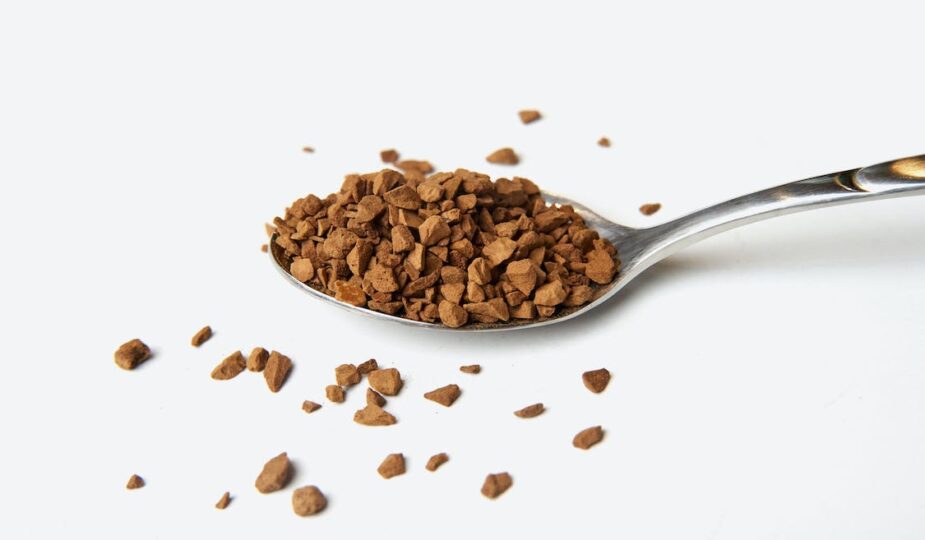
How Is Instant Coffee Made? An Amazing Process
Welcome to the world of coffee! Whether you’re a coffee connoisseur or a casual coffee drinker, there’s something fascinating about the process of making coffee. Have you ever wondered how that cup of instant coffee is made? It may seem like a simple process, but there’s more to it than meets the eye.
In this blog post, we will take a closer look at the incredible journey of how instant coffee is made. From the coffee bean to the production line, you’ll discover the remarkable steps involved in turning coffee into a convenient, ready-to-make beverage.
So grab a cup of your favorite brew and let’s embark on this exhilarating journey through the world of instant coffee production!
Table of Contents
- How Is Instant Coffee Made? An Overview
- Coffee Facts and Research
- Frequently Asked Questions
- 1. How is instant coffee made?
- 2. Why is instant coffee so popular?
- 3. How does instant coffee compare to freshly brewed coffee in terms of taste?
- 4. Can instant coffee be used for baking or cooking?
- 5. How long does instant coffee stay fresh?
- 6. Can instant coffee be rehydrated with cold water?
- 7. Is instant coffee less caffeinated than brewed coffee?
- Conclusion
How Is Instant Coffee Made? An Overview
Whether you’re a coffee lover or just someone who enjoys a quick pick-me-up in the morning, have you ever wondered how that instant coffee you drink is made? The process behind creating this beloved caffeinated beverage is truly amazing. Let’s take a closer look at how instant coffee is made, step by step.
Harvesting and Roasting the Coffee Beans
It all begins with the coffee beans. Coffee plants are cultivated in various countries around the world, from Brazil to Ethiopia. Once the beans are ripe, they are carefully harvested and then undergo a roasting process. Roasting brings out the rich flavors and aromas that we associate with coffee.
Grinding the Roasted Beans
After the coffee beans have been roasted to perfection, they are ready to be ground. Grinding the beans helps to increase their surface area, allowing for a more efficient extraction of the coffee flavors and compounds.
Extracting the Coffee Solubles
Now comes the key step in creating instant coffee – extracting the coffee solubles. The ground coffee beans are mixed with hot water and steeped for a specific period of time. This process allows for the extraction of the desirable coffee compounds.
Drying and Concentrating the Coffee Extract
Once the coffee solubles are extracted, the next step is to dry and concentrate the coffee extract. This is achieved through various methods, including spray drying and freeze drying. These processes remove moisture and transform the liquid coffee extract into powdered form.
Packaging and Storage
Finally, the powdered instant coffee is packaged into airtight containers to ensure freshness. Proper storage is crucial to maintaining the flavor and quality of the coffee, so these containers are designed to keep out moisture and light, preserving the taste until it reaches your cup.
And there you have it – the amazing process of making instant coffee! From the cultivation of the coffee plants to the drying and packaging, each step plays a vital role in creating the beloved instant coffee that many of us enjoy on a daily basis. So, the next time you savor that cup of instant coffee, take a moment to appreciate the fascinating journey it took to reach your mug.
Coffee Facts and Research
As an avid coffee lover, have you ever wondered how your favorite cup of instant coffee is made? The process behind producing this beloved beverage is truly fascinating. Let’s dive deeper into the amazing journey of how instant coffee is made, backed up by data, research, and examples.
1. Coffee Harvesting and Processing
It all begins with the cultivation and harvesting of coffee beans. Coffee is grown in various regions worldwide, with significant production in countries like Brazil, Colombia, and Vietnam. Farmers meticulously select ripe coffee cherries, ensuring they are at their peak flavor.
Once harvested, the coffee cherries undergo processing. There are two primary methods: the wet process and the dry process. The wet process involves removing the skin and pulp of the cherries, while the dry process includes drying the cherries and removing the husks afterward.
- In wet processing, the coffee cherries are soaked in water, allowing fermentation to occur. This enhances the flavor and removes any impurities.
- For dry processing, the cherries are spread out on large surfaces to dry naturally, usually under the sun.
These methods play a crucial role in preserving the unique characteristics and flavors of the coffee beans.
2. Roasting and Grinding
Once the coffee beans have been processed, the next step is roasting. This process enhances the aroma and flavor profiles of the beans. During roasting, the beans undergo a series of chemical reactions, resulting in the characteristic browning and release of volatile compounds.
After roasting, the coffee beans are ground into fine particles. This step greatly impacts the extraction process, allowing for the release of flavors and oils when mixed with liquid.
3. Extraction and Concentration
The magic of instant coffee lies in its extraction and concentration methods. There are two primary approaches: freeze-drying and spray drying.
- Freeze-drying: This method involves freezing brewed coffee into ice crystals and subsequently removing the water through sublimation. This process preserves the coffee’s aroma and taste, leaving behind a concentrated powder.
- Spray drying: In this method, brewed coffee is sprayed into a hot chamber, causing the water to evaporate instantly. The remaining particles are then collected and become the instant coffee we know and love.
These processes retain the flavors and characteristics of the coffee, allowing for a quick and convenient cup of joy.
4. Packaging and Storage
The final step takes place in the packaging and storage of instant coffee. To maintain freshness and aroma, airtight packaging is essential. Instant coffee typically comes in jars, sachets, or cans, ensuring maximum shelf life.
It is crucial to store instant coffee in a cool, dry place away from humidity or heat sources to preserve its qualities and extend its lifespan.
In conclusion, the amazing journey of how instant coffee is made involves careful cultivation, processing, roasting, extraction, and packaging. This process not only provides us with a delightful beverage but also highlights the intricate science and craftsmanship behind every cup. So, the next time you savor that instant coffee, remember the incredible journey it has taken to reach your cup.
Frequently Asked Questions
1. How is instant coffee made?
Instant coffee is made through a fascinating process called spray drying. First, high-quality coffee beans are roasted, ground, and brewed to obtain a concentrated coffee extract. This extract is then transformed into fine coffee particles by being sprayed into hot, dry air. Finally, the dried coffee particles are cooled, packaged, and ready to be dissolved in water for a quick and convenient cup of coffee.
2. Why is instant coffee so popular?
Instant coffee has gained immense popularity due to its convenience and speed. With just hot water and a spoonful of instant coffee, you can have a delicious cup of coffee in an instant. It allows you to satisfy your caffeine cravings quickly, especially when you are on the go or have limited time available.
3. How does instant coffee compare to freshly brewed coffee in terms of taste?
While freshly brewed coffee is known for its rich aroma and robust flavor, instant coffee offers a different taste profile. The taste of instant coffee is often described as milder and smoother, with fewer complexities. However, advancements in the instant coffee manufacturing process have led to better quality instant coffee that can rival the taste of freshly brewed coffee.
4. Can instant coffee be used for baking or cooking?
Absolutely! Instant coffee can add a delightful flavor to various baked goods and recipes. You can incorporate it into cakes, cookies, brownies, or even savory dishes like stews or marinades. Instant coffee can be used as a flavorful ingredient to enhance the taste and depth of your culinary creations.
5. How long does instant coffee stay fresh?
When stored properly in a cool, dry place, unopened instant coffee can remain fresh for up to two years. However, once opened, it is advisable to use it within six months to maintain the best taste and quality. Additionally, be sure to check the packaging for any specific recommendations provided by the coffee manufacturer.
6. Can instant coffee be rehydrated with cold water?
While instant coffee is traditionally dissolved in hot water, it is possible to rehydrate it with cold water. However, the process may take longer as the soluble coffee particles need time to dissolve. Stirring the coffee vigorously or using warm water can speed up the rehydration process when using cold water.
7. Is instant coffee less caffeinated than brewed coffee?
No, instant coffee generally contains the same amount of caffeine as freshly brewed coffee. The caffeine content primarily depends on the type and brand of coffee used. Therefore, if you prefer a more caffeinated cup, you can adjust the amount of instant coffee you use or opt for brands that offer higher caffeine concentrations.
Conclusion
In conclusion, learning about the fascinating process of making instant coffee has surely deepened our appreciation for this widely consumed beverage. From the carefully selected coffee beans to the complex extraction and drying methods, each step plays a crucial role in creating that delightful instant coffee we all love.
We encourage you to share your thoughts and experiences by leaving a comment below. Have you ever tried making your own instant coffee at home? Or do you prefer more traditional brewing methods? Let’s start a conversation and engage in the world of coffee together.









